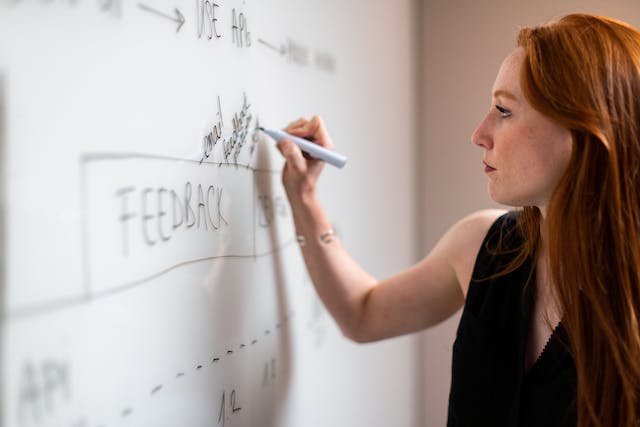Agile software development is a practice that most technology companies are reaching for. Because of the benefits it brings in terms of flexibility, efficiency and large layers of effectiveness. Particular attention should be paid to user stories, which are part of agile software development. It is a tool that defines every detail, even the smallest one, in a project. In this text, I will introduce you to what exactly user stories are, what role they play in a project and why you should pay more attention to them during the development process.
Table of Contents:
What are the User Stories?
In the software development process, the development team performs a number of different technological activities to demonstrate the functionality of the product. However, even the most sophisticated technical terminologies cannot directly replace the user approach. For this reason, a lot of attention is paid to user stories. This is a simple form of design communication that defines who the product is aimed at. User stories should, by definition, be created in as simple a form as possible. They can sometimes be found in the form of short, even one-sentence descriptions. Usually, user stories are placed on sticky notes and then stuck on a wall or whiteboard to present and discuss the scope of development in detail.
This formula is intended to encourage discussion and, at the same time, illustrate expectations of the software concept being implemented. The order in which the features are to be realised, the timeframe in which the various stages of the project will take place and who the target audience for the newly developed product or service is are also established on the basis of these guidelines.

What does a good User Story consist of?
While preparing user stories for a project, it is important to ensure that their format addresses the three most relevant questions: who, what and why. The first of these is the definition of the persona. It should indicate as much detail as possible relating to the end user. The answer has to be concise in order to have as much detail as possible. The second is the question of purpose. Every project ought to have a defined vision. It outlines the purpose of the solution and helps meet needs. The last question relates to the reason. Before putting the software in the hands of the user, it is important to consider what the reason is for the software and what the solution being developed is supposed to be responsible for. For this purpose, all functionalities are considered to focus on working on those that are actually considered necessary.

The role of User Stories in Agile Development
The concept of user stories is often found in Agile methodologies. By focusing on the user, application development is based on the specific needs of the user. It is worth noting that this approach is relatively flexible and prone to fluid adaptation. It is very easy to establish priorities while taking into account requirements that are often subject to modification. The process of establishing effective user stories is primarily about adhering to the above-mentioned guidelines, but also working on the basis of the INVEST criteria - Independent, Negotiable, Valuable, Estimable, Small, and Testable. Thanks to the above-mentioned guidelines, the descriptions implemented can be well-defined and at the same time coincide with the project goals.
User Stories are also tools to properly manage the backlog, set sprints and undertake the development and testing phase. Each description is a component of a comprehensive set of features to be undertaken. The process involves both the development and test teams, whose job is to ensure that the project develops appropriately. The role of user stories in Agile Development should go beyond standard documentation. It is a modern approach that enables rapid software decision-making and is at the heart of any user-centred project.
CCC - Card, Conversation, Confirmation
The user stories structure includes three elements that every project team should be aware of. It emphasises clear communication, collaboration and a shared understanding of what needs to be delivered, ensuring alignment with user needs and project objectives.
The first component is the card, the space responsible for placing user stories. The charter does not necessarily have to contain the fully refined elements of the project. Its purpose is to get the team to discuss within the Agile methodology.
The second component included in the CCC charter is the conversation. Both the project owner and the development team should discuss each component of the implementation being done. Verbal communication with the support of technical documentation, testing and other data provides an adequate background for a substantive discussion. As a result, the conclusions drawn from it can completely revolutionise the perception of the project to date.
The final factor is confirmation. These are the elaborated assumptions that must be met within a set period of time in order for the project to move forward in the coming future. These are set by the team in consultation with the stakeholders.

User Stories in Discovery Phase
Linking user stories together with the discovery phase has an impact on the product development process. By focusing on the user, developers can achieve a final result that is in line with the assumptions mentioned by the audience. However, before the discovery phase translates into the final product, the project team must responsibly approach the user's role in the project. First and foremost, it is essential to listen to their needs and understand their pain points. Knowing the realities of the potential audience of the software allows it to be better distributed and provide functionality.
The cooperation between the discovery phase and the user stories process helps to define the scope of the project. Defining its framework makes it possible to position the individual in the phase and prioritise tasks. It is also important to remember that it is the user who leads the entire process, not the end product. The most common mistake is to design solutions that have no user demand. Therefore, both the business idea itself and the individual interfaces and experiences should be aligned with the expectations of the audience.
In considering user stories, the factor of risk mitigation is often underestimated. By dissecting every single element of the process, even the smallest, the occurrence of potential problems can be reduced. Combined with the discovery phase, a solid bank of information is created that minimises the risks arising from ignorance.
How does Railwaymen approaches working on user stories?
At Railwaymen, the process of shaping user stories is very important in terms of the outcome of each project. Therefore, due care is taken by each project team in the processes preceding development. In this case, a noteworthy one is the discovery phase process, which not only provides the necessary knowledge of the project, but also helps to segregate tasks into individual phases. I warmly encourage you to find out more about the details of this process at our software house. Visit our dedicated page, where we present each element of the discovery phase in detail and highlight why user stories are important for ongoing projects.


%20(1).jpg)



